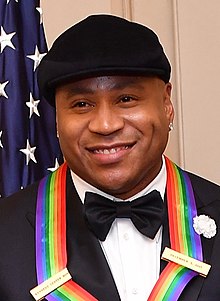
Hot Rap Songs is a record chart published by the music industry magazine Billboard which ranks the most popular hip hop songs in the United States. With hip hop having greatly increased in mainstream popularity in the late 1980s, Billboard introduced the chart in their March 11, 1989 issue under the name Hot Rap Singles.[1][2] Prior to the addition of the chart, hip hop music had been profiled in the magazine's "The Rhythm & the Blues" column and disco-related sections, while some rap records made appearances on the related Hot Black Singles chart.[3] The inaugural number-one single on Hot Rap Singles was "Self Destruction" by the Stop the Violence Movement.[4] From its 1989 inception until 2001, the chart was based solely on each single's weekly sales.[5] To formulate chart rankings, Billboard assembled a panel of selected record stores to provide reports of each week's top-selling singles.[6]
Between 1989 and 1999, 173 singles topped the Hot Rap Singles chart, with "Hot Boyz" by Missy Elliott featuring Nas, Eve and Q-Tip being the final number-one single of the 1990s.[7] The single's 18-week reign at the top spot extended into the next decade, and until 2019 it held the record for the most weeks at number one in the chart's history.[8] LL Cool J and Puff Daddy each attained nine number-one hits on the Hot Rap Singles chart during its first 11 years, the most for any artist during this period.[9][10] In a 25th anniversary listing of the top 100 songs in the history of Hot Rap Songs based on chart performance, "Me So Horny" by the 2 Live Crew and "Tootsee Roll" by 69 Boyz were the highest-ranked singles of the 1980s and 1990s respectively.[11][12]
- ^ Ramirez, Erika (March 4, 2014). "Hot Rap Songs Chart 25th Anniversary: Top 100 Songs". Billboard. Prometheus Global Media: 1. Archived from the original on March 7, 2014. Retrieved March 8, 2014.
- ^ Keyes 2004, p. 102.
- ^ Harrison, Anthony Kwame; Arthur, Craig E. (July 2011). "Reading Billboard 1979–89: Exploring Rap Music's Emergence Through the Music Industry's Most Influential Trade Publication". Popular Music and Society. 34 (3). Routledge: 309–27. doi:10.1080/03007766.2010.522806. S2CID 191448612.
- ^ King, Aliya S. (April 24, 1999). "NYC Shooting Case Inspires Rap Single". Billboard. 111 (17). Nielsen Business Media: 80. Retrieved October 17, 2013.
- ^ "Rap Chart Changes From Sales To Airplay". Billboard. 114 (23). Nielsen Business Media: 10. June 8, 2002. Retrieved October 17, 2013.
- ^ Rossi, Terri (March 25, 1989). "Interloper On Rap Chart". Billboard. 101 (12). BPI Communications.
- ^ Cite error: The named reference
Billboard 1999was invoked but never defined (see the help page). - ^ Trust, Gary (February 3, 2012). "Drake 'Proud'-ly Rewrites Record for Most Rap Songs No. 1s". Billboard. Prometheus Global Media. Archived from the original on August 21, 2014. Retrieved March 1, 2014.
- ^ "LL Cool J Chart History (Hot Rap Songs)". Billboard. Prometheus Global Media. Archived from the original on November 17, 2021. Retrieved January 17, 2020.
- ^ "Puff Daddy Chart History (Hot Rap Songs)". Billboard. Prometheus Global Media. Archived from the original on November 17, 2021. Retrieved January 17, 2020.
- ^ Ramirez, Erika (March 4, 2014). "Hot Rap Songs Chart 25th Anniversary: Top 100 Songs (30–21)". Billboard. Prometheus Global Media: 10. Archived from the original on March 10, 2014. Retrieved March 9, 2014.
- ^ Ramirez, Erika (March 4, 2014). "Hot Rap Songs Chart 25th Anniversary: Top 100 Songs (10–1)". Billboard. Prometheus Global Media: 10. Archived from the original on August 24, 2014. Retrieved March 8, 2014.